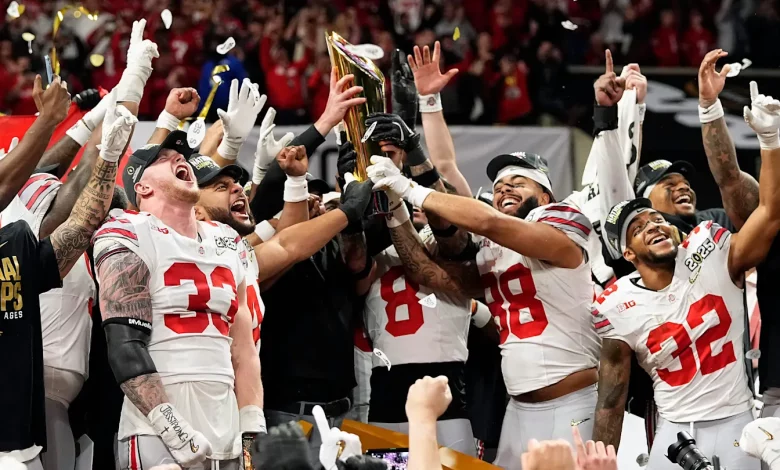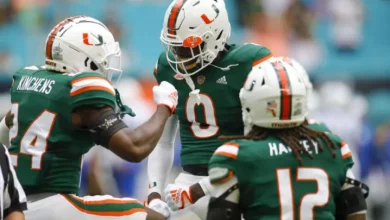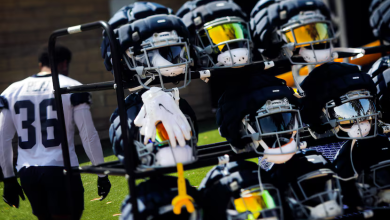Was NIL Spending the Key to the Ohio State Buckeyes’ National Championship?

In college football, the quest for a National Championship has always been a combination of talent, coaching, strategy, and, to some degree, luck. However, in recent years, a new factor has entered the equation with the potential to dramatically shift the balance of power: Name, Image, and Likeness (NIL) deals. The introduction of NIL rights for college athletes has revolutionized the way college programs recruit and retain top talent. As a result, schools that can offer lucrative NIL deals to their athletes have gained an undeniable competitive advantage.
One school that has embraced this new landscape is the Ohio State Buckeyes, a perennial powerhouse in college football. With the 2025 National Championship on the horizon, many are asking: Was NIL spending the key to Ohio State’s success in securing a National Championship? In this article, we’ll explore how NIL has played a role in the Buckeyes’ rise to the top of college football, how their investment in NIL has affected the team’s performance, and whether it was indeed the decisive factor in their Championship victory.
The Rise of NIL in College Sports
Before delving into Ohio State’s use of NIL spending, it’s essential to understand how NIL deals have impacted college sports as a whole. On July 1, 2021, the NCAA formally allowed college athletes to profit from their name, image, and likeness, marking a monumental shift in the landscape of college sports. Athletes were no longer restricted from signing endorsement deals, appearing in advertisements, or receiving compensation for their personal brand.
This decision opened the floodgates for athletes to monetize their popularity in ways that were previously unimaginable. While some athletes began signing deals with national brands immediately, others turned to local businesses and digital platforms, capitalizing on their social media presence. Schools, meanwhile, started to adapt to this new reality, either by facilitating NIL deals or creating collectives (groups of alumni and boosters) designed to pool resources for athlete compensation.
Ohio State’s NIL Strategy: A Game Changer
The Ohio State Buckeyes, under head coach Ryan Day, are a program that has always recruited top talent. Year after year, they secure high-level recruits and consistently contend for national titles. However, in the era of NIL, the Buckeyes took their recruiting to the next level. Ohio State quickly recognized that NIL could play a pivotal role in attracting the best players in the country, ensuring that they not only competed for national championships but also provided their athletes with unparalleled opportunities to profit from their success on the field.
1. Establishing NIL Collectives and Partnerships
One of the key moves that Ohio State made in the NIL era was the creation of several NIL collectives designed to connect their athletes with companies eager to sponsor them. These collectives, such as The Foundation and The Collective at Ohio State, were formed to leverage the vast financial resources of Ohio State’s alumni network and local businesses. The goal was clear: ensure that the Buckeyes’ athletes were not only among the best in terms of athletic ability but also financially compensated in a way that matched their value.
Ohio State’s NIL collectives and partnerships with businesses allowed players to secure high-paying endorsement deals, from signing autographs to partnering with large national companies. As one of the most recognizable football programs in the country, Ohio State’s reputation drew interest from top brands across a wide array of industries, from tech companies to local restaurants to large national retailers. The competitive nature of NIL, where athletes often receive significant offers from different schools, incentivized top recruits to choose Ohio State over other programs.
2. Boosting Recruiting Efforts
Ohio State’s investment in NIL also had a profound impact on their recruiting efforts. Recruiting top high school athletes has always been a priority for any college football program, but NIL deals have become an increasingly important factor in a recruit’s decision-making process. Many recruits today, especially those with big social media followings, are not only looking at the strength of a program’s football legacy or the quality of its coaching staff—they’re also evaluating how much money they can make while playing college football.
For Ohio State, the financial resources available through their NIL collectives made them an attractive destination for top recruits. As an example, Ohio State was able to secure a commitment from several five-star recruits whose decision to attend the school was influenced by the lucrative NIL opportunities available. This helped Ohio State solidify their roster with elite talent—talent that would be critical to their run to a National Championship.
One such recruit was a highly touted quarterback who had multiple options to choose from but ultimately selected Ohio State after seeing the financial opportunities presented to him through NIL deals. The financial security and brand-building possibilities that Ohio State offered provided an extra layer of allure, making it easier for the Buckeyes to attract top-tier players who might otherwise have considered other schools with larger NIL offerings.
3. NIL’s Role in Retaining Key Players
While NIL has helped Ohio State secure top talent, it has also played an important role in retaining current players. In past years, players might have been enticed to leave for the NFL after three seasons, regardless of their college performance. However, with NIL deals now available to athletes throughout their college careers, Ohio State has been able to offer financial incentives that keep their players in Columbus for longer. This has proven crucial, especially for star players who may have been tempted to enter the NFL draft early but decided to stay to build their personal brands and maximize their NIL earnings.
Ohio State’s ability to retain players like star wide receivers, top-tier quarterbacks, and defensive standouts allowed them to maintain a roster of seasoned, high-performing athletes. For example, a standout defensive lineman was able to capitalize on his NIL deals during his senior year, which ultimately helped him stay one more season at Ohio State, providing a significant boost to the team’s chances of winning the National Championship. This retention strategy, fueled by NIL, allowed Ohio State to maintain continuity and build upon previous seasons of success.
NIL Spending and Ohio State’s Success in the National Championship
With NIL in place, Ohio State’s on-field success skyrocketed, culminating in their 2025 National Championship victory. While the Buckeyes’ roster was already stacked with talent, their ability to offer financial incentives through NIL deals provided a competitive edge that proved to be the difference-maker in several key matchups. Here’s a look at how NIL spending contributed to their title run:
1. Attracting Elite Talent at Every Position
Ohio State’s roster for the 2025 season featured a mix of experienced upperclassmen and dynamic freshmen, many of whom were recruited or retained thanks to NIL incentives. Their star quarterback, a top recruit who had signed an NIL deal with a tech giant, threw for over 4,500 yards during the season, leading the team’s offense with precision and poise. On the defensive side, a group of aggressive pass rushers, some of whom had signed NIL deals with local car dealerships, relentlessly pressured opposing quarterbacks and disrupted offenses.
The ability to secure such a diverse and talented roster through NIL spending allowed Ohio State to field one of the most balanced teams in the country, and their depth at every position was a major factor in their ability to win the National Championship.
2. Elevating Player Performance through NIL-Backed Support
Another overlooked but important aspect of Ohio State’s success was the support their players received from NIL-backed resources. These resources included cutting-edge training programs, high-quality nutrition plans, and access to expert coaching staff. With NIL collectives working to elevate players’ development, Ohio State’s athletes were able to maximize their potential both on and off the field.
For example, several Ohio State players took advantage of NIL opportunities to work with high-profile personal trainers, enhancing their physical conditioning and skill sets in ways that provided a direct impact on their performance. In a sport where the margin between winning and losing can be razor-thin, having access to superior training and development was invaluable.
3. Boosting Fan Engagement and Motivation
Finally, the financial benefits of NIL spending extended beyond the players themselves—it also helped build excitement and engagement around the Ohio State football program. Players became stars in their own right, building brands and engaging with fans in ways that kept Ohio State at the forefront of college football conversations. Their success in the NIL space helped to cultivate a culture of pride and motivation, both within the team and among the fanbase. This generated additional revenue and support for the program, further fueling their title pursuit.









